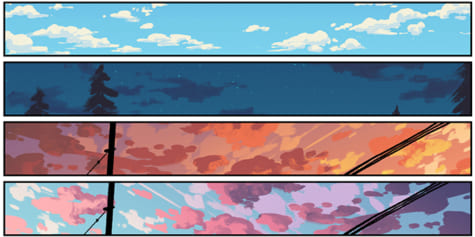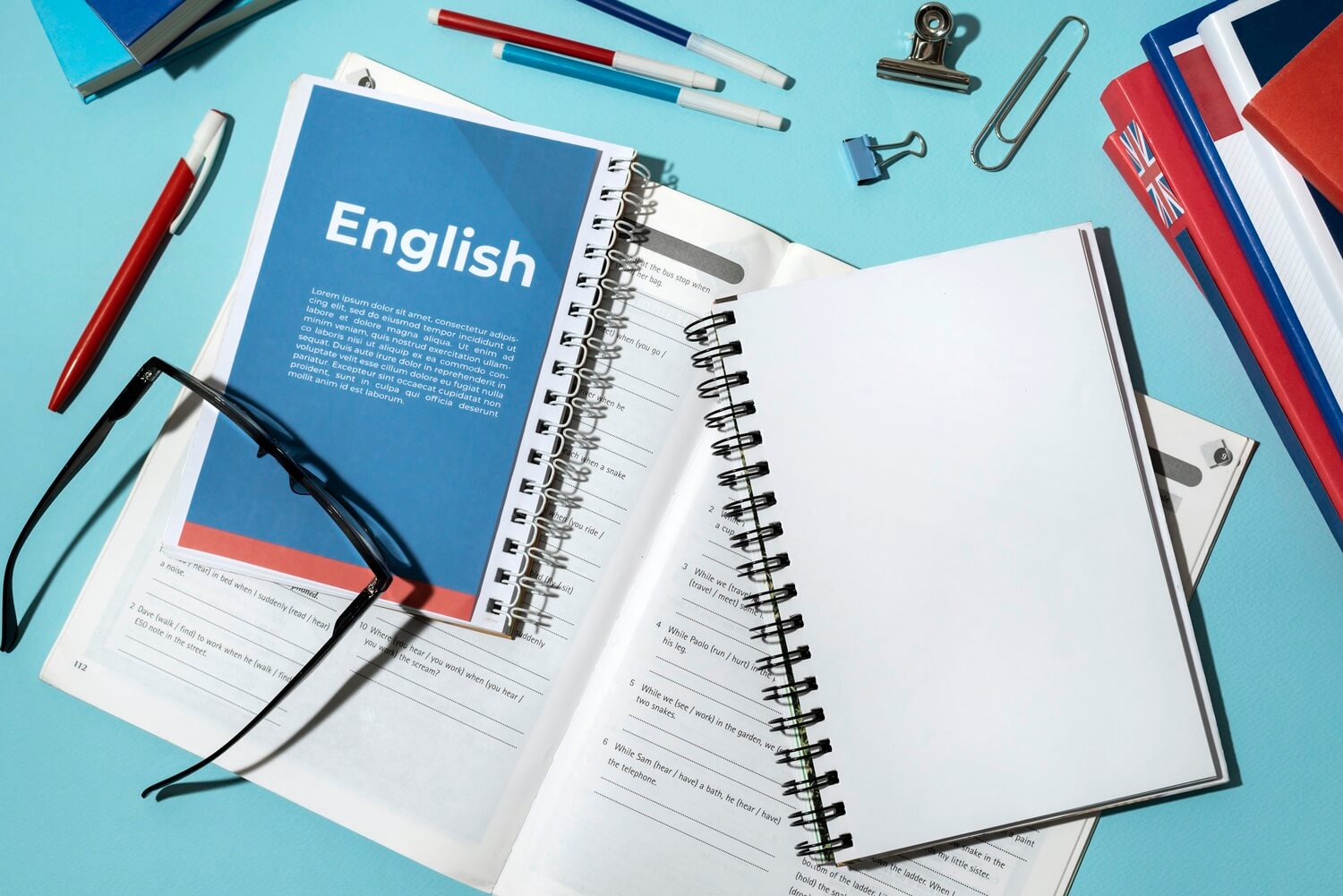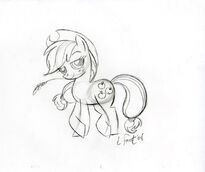Hey, I’m Darlene and in this tutorial, I’m going to explain the Loomis method for drawing a face from the front view. It took me a long time to understand and be able to draw the Loomis heads properly, so my goal with this tutorial is to make each step as easy to understand as possible and bridge any gaps. I also added some methods of my own.
This method allows you to not only draw faces from the front view but also from ANY view that you want.
This is PART 1 in a 4 part series where I’ll show you step-by-step how to draw 4 different head positions.
Drawing Tools
These are the tools I’m going to use. Feel free to use a regular school pencil and eraser though.
- A colored pencil for drawing construction lines
- A 4B graphite pencil for the finalized drawings
How to Draw a Face from the Front View (Loomis Method)
Let’s start with the easiest angle. The front view. I’m using a colored pencil crayon for all the construction lines so you can still see the construction of the head after the drawing is complete. Keep in mind that pencil crayon cannot be erased easily, so if you’re following along, you might want to use just a regular graphite pencil for this construction process.
Draw Construction Lines for a Head in the Front View
The first step is to draw a circle. To do so, limit the movement in your fingers and wrist and instead, move your elbow and shoulder. Just hover over your sketchbook, creating circular motions. When the movement looks and feels right, lower your pencil to create a faint circle. It may take a few tries and that’s perfectly normal!
I’ve gone over my circle to make it dark so the instructions are more clear. But try to keep your construction lines very light.
The next step is to create a vertical line (called the middle line) and a horizontal line (called the brow line) that runs through the very center of your circle.
Since the side of the human head is more flat, let’s cut off the sides of our circle. To cut off just the right amount, split the vertical line (aka middle Line) into 6 equal spaces.
Draw a straight horizontal line through the top and bottom-most tick.
Where each horizontal line intersects with the circle, draw a straight vertical line:
You should now have a square within your circle.
I can’t easily erase pencil crayon, so for now, just imagine that the left and right sides of the circle are gone.
Determine Where each Facial Feature Goes
Extend the middle line down so we can mark where all his facial features go.
We already know where the eyebrows are going to go, so next, we’ll need to figure out the placement of the hairline, nose, and chin. In the process of cutting off the sides of our circle, we’ve actually created the hair line and nose line already.
For an average male face, all of these features will be spaced evenly apart, so to find the boundary of the chin, take a measurement from hair to brow OR brow to nose to find the distance between the nose and chin. Make a small tick to mark the spot:
Now we have 4 horizontal feature lines that are spaced evenly apart.
To complete our head shape, we’ll need to draw the jawline. Extend the sides of the head down a little and then taper your pencil stroke in toward the chin. You can adjust the chin width based on your preference. For older males, I like to make the chin very wide with sharper angles. For a younger male with softer features, I like to draw the chin more narrow and smooth out the corners.
Now we have a complete head shape!
But there are two more feature lines to draw – the eye line and lip line!
The eye line is located about 1/3 of the way down from brow to nose.
And then between the nose and chin, there’s the lip line. It looks like it’s halfway between the nose and chin, but it’s actually just a little closer to the nose.
Time to Draw the Actual Facial Features
Let’s start adding his features now! Now that we’ve constructed the head shape and know where each facial feature should go, let’s use these as guidelines to draw our details on top!
Draw his ears along the side of the head, positioned between the brow and nose.
It may help to think of the ear as a shape that resembles half of a heart ❤️.
Introducing the Skull and Planar Head
Drawing the rest of his facial features can be very intimidating. So before we actually draw any of them, it’s good to learn where each feature fits on the face, then we can worry about how to draw each one.
A good way to approach this is to first practice drawing the human skull because it helps us understand the structure beneath all that skin.
Study and draw the skull from all sorts of angles. There are many apps and online references you can use to study from.
You can also learn how to draw muscles of the face, which is covered in Andrew Loomis’ book.
Learning how to draw a planar head will also come in handy. It’s basically a blocky, simplified version of the head. When you practice drawing this, it helps you better visualize where the facial features go. And it will give you a better grasp of the subject in a 3-dimensional space, giving you an understanding of how to draw the subject from different angles, which will help you as you move on in this drawing series.
It takes some time to learn this, but if you put in the time, your drawing skills will level up dramatically.
You can go right ahead and actually draw the planar head over your drawing very lightly to block out the different sections from one another. There are many ways to draw a planar head, as you can tell from a quick Google search. The Loomis one is a little different from what I’m doing now.
I like to lightly sketch just the face section and ignore the rest of the head, but when you’re practicing it’s probably a good idea to draw the whole planar head.
Please refer to the book for more info on this.
I’ll walk you through the specific placement of each facial feature as I draw them. With the skull and planar head references, you can probably already vividly picture where the features go.
Along the brow line, let’s draw his eyebrows. Slant them up at the ends. Leave a little space between the tail of each eyebrow and the side of the head.
Use your planar head sketch as guidelines to help with drawing the nose. The nose should sit on the nose line and be balanced along the middle line that runs vertically down the face.
I won’t go into much detail on how to draw each individual facial feature because I have separate tutorials for each one already. Click here to find all my free facial feature tutorials.
To place the eyes, draw a vertical line from the wing of the nose all the way up to the eyeline. That marks the inner corner of each eye.
The width of each eye should be about the same width as the nose.
For each eye, you can draw a trapezoid-like shape, then round off the corners to create something that looks more like an eye.
Position his eyes right above the eyeline.
Add an eyelid crease above each eye – It’s just a line that roughly follows the eye shape.
To draw the lips, I’m going to use a different method from Andrew Loomis.
Where your lip line intersects with the middle line, draw a U-shaped curve. It can be pointy, shallow, wide, or long. To either side, draw the corners of the mouth using small ticks, then connect the dots creating a wavy line in the shape of your choice.
Draw the outline for his top lip, creating an M-like shape. The bottom lip is like a very wide and shallow U shape.
How wide should the mouth be? It’s up to you, but I like to draw it a little wider than the nose.
Let’s draw his cheeks next.
If you want to really define his cheeks but don’t know where to start, it helps to visualize his skull. Also, knowing where the cheekbones end will help you understand which areas you can hollow out.
For his jaw, use your construction lines as a rough guide, softening the harsh angles. I’m giving him a dimpled chin.
For his neck, draw it as thick as you’d like.

Let’s draw the outline for the top and sides of his head. Round off the sharp corners and make the sides of his head come out a little more than the blue construction lines.
How to Draw Hair in the Front View
To draw his hair, you can use the hair line as a reference point, which will give him a medium-sized forehead. Draw above or below the hair line to give him a larger or smaller forehead.
Where the hair line intersects with the vertical middle line, I’ve drawn a dip to give him what’s called a cowlick. The boundary of his hair along the two sides of his forehead angle in slightly toward his eyebrows and then out toward each ear.
You can leave it like this so he has a buzz cut (head pictured on the left) or give his hair some length and volume (head pictured on the right). To do that, first select where you want his hair parting line to be (where he parts his hair). The parting line is the transition point between where his hair sweeps left and right. Start drawing his hair from that point and give him any hairstyle you want. To give his hair more volume, draw it further away from his head.
Once you’re happy with how your drawing looks, erase the faint construction lines and that completes our head drawn from the front view!
We’re going to use the exact same method to draw the last 3 heads in PART 2-4 of this series, so you’re going to see the same patterns come up over and over again, but from different angles!
I hope you enjoyed this drawing tutorial! If your drawing didn’t turn out the way you wanted the first time, don’t give up. It takes some practice and some patience. You can do it!!
Use the links below to navigate through the rest of the tutorials in this series on drawing faces from any angle using the Loomis method.
PART 2: Side View
PART 3: 3/4 View
PART 4
Coming soon…
![]()
Darlene created RFA In 2013 with the goal of sharing simple yet detailed drawing tutorials with other artists on the world wide web. She is a self taught pencil portrait artist and Youtuber.






